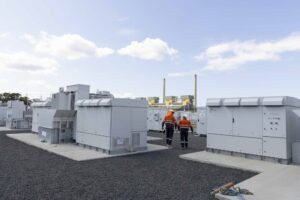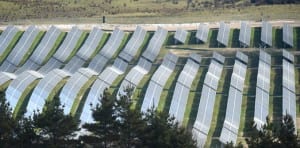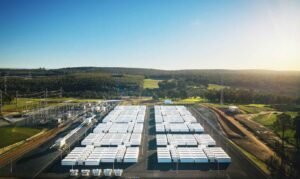Victoria’s major electricity distribution companies are seeking approval to invest tens of millions of dollars on network upgrades that will pave the way for a future where grid-connected solar is on almost every household rooftop.
Network operators Powercor, UnitedEnergy and CitiPower, which collectively supply electricity to the majority of the state, say they are working to allow around 95 per cent of their customers to install at least 5kW of rooftop solar with unlimited export capacity.
The major plans for “solar enablement” are outlined in the three companies’ latest five-year investment proposals – the cost benefit analyses that must be submitted by networks to the Australian Energy Regulator for approval before major investments can be made.
In past years, these plans have tended to focus on building out more poles and wires, to better distribute the energy generated by ageing centralised coal and gas plants – often at a great cost to the customer.
But this approach is finally evolving, with each of the three companies forecasting massive increases in the uptake of rooftop solar on their networks over the coming five years, while also recognising the benefits to all parties if these systems are allowed to export to the grid.
As things stand, however, the networks are not equipped for the sort of rooftop solar growth that is being predicted.
Rather, according to a study informed by 38 billion data points from smart meters across the Powercor, CitiPower and United Energy networks, the companies found that if no action was taken by 2026, a large proportion of customers would experience export constraints more than 20% of the time.
“Our customers are changing the way they use, store and sell electricity,” says Powercor, which says it expects the proportion of customers with solar on its network to grow from 18% (133,401) in 2019 to 34% (288,928) in 2026.

“We recognise customers are seeking to lower electricity bills, have greater energy independence and help the environment,” the regulatory investment proposal says.
To address this growth, avoid future constraints, and even harness the benefits of rooftop solar, Powercor says it wants to spend $61 million to enable approximately 95 per cent of customers to connect a 5kVA solar PV system with export capability.
Powercor says this level of investment is expected to deliver a net benefit to all customers of $77 million over the five year period by replacing higher cost generation and achieving a reduction in carbon emissions.
Similarly, UnitedEnergy, which services Melbourne’s south-eastern suburbs and the Mornington Peninsula, wants to invest $42 million on allowing “most customers” to install solar, as the proportion of customers with rooftop PV on its grid grows from 11% (75,053) in 2019 to 23% (163,766) in 2026.

In UnitedEnergy’s case, the investment in allowing more distributed solar onto the network is expected to deliver a net benefit to all customers of $73 million over the five-year period.
CitiPower, meanwhile, is expecting the capacity of installed solar on its inner Melbourne network to grow from 4% (12,545) in 2019 to 24% (73,845) in 2026, and wants to spend $32 million to accommodate this growth.
“Our plan is to deliver more to customers at a lower cost,” said United Energy, Powercor and CitiPower CEO Tim Rourke in comments on Monday.
“We are proposing high levels of investment so we can continue to operate the network safely and reliably. Efficiencies in our operations mean we can offer this increased investment while reducing costs to customers.”
To read the full story on RenewEconomy sister site One Step Off The Grid, click here…








